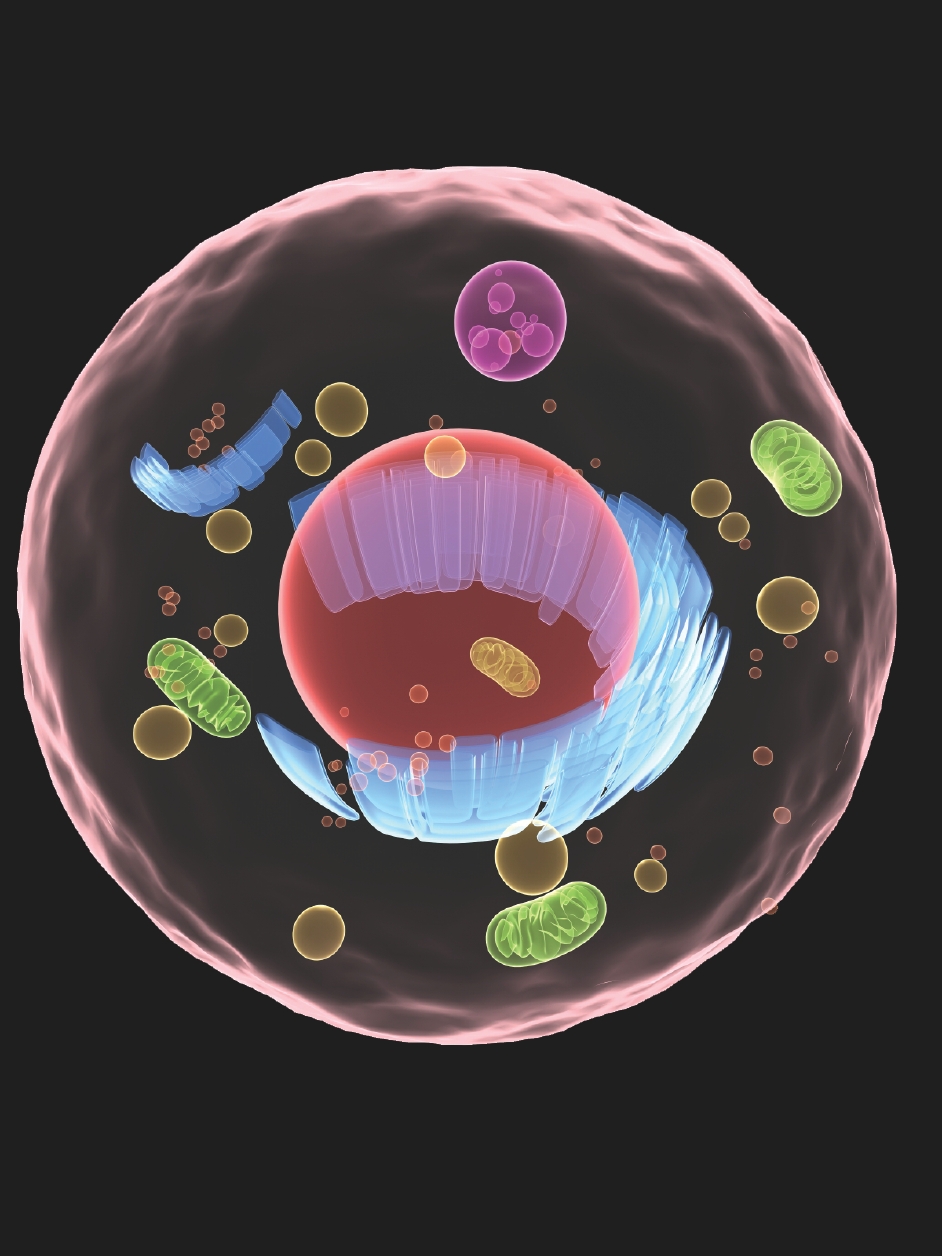What’s inside a cell?

[fototag id=”insideacell”]
Cells are the building blocks of all living organisms. Individual cells are classified as living things, and there are millions of organisms that are unicellular across the planet.
As they are living units, cells consequently need energy, and therefore respire to survive. Parts of the cell, called organelles, work like organs of a body. Energy for the cell to process can be provided by the cell, such as through photosynthesis in plants, or absorbed into the cell through cell membranes and then processed within it by the mitochondrion. Single cells operate like this, and there are billions of unicellular organisms that survive independently or within multicellular organisms. These single cell organisms are generally prokaryotic cells, which are much smaller and have fewer organelles, most importantly lacking a nucleus. Multicellular organisms are primarily made up of eukaryotic cells which are more complex and can therefore specialise so the organism can become more complex. They do this by grouping together to form tissues, which then group to form organs within the organism.
Cells reproduce to replace old, damaged cells in an organism, to allow growth or growth of a new individual. In unicellular organisms, cell reproduction is obviously the only way a population will grow. Prokaryotes favour binary fission, where all genetic information is doubled and then the cell divides into two new, identical cells. Eukaryote cells use either mitosis, which results in two identical organisms or cells, or meiosis, which results in each new cell having half the number of chromosomes of the original cell.





